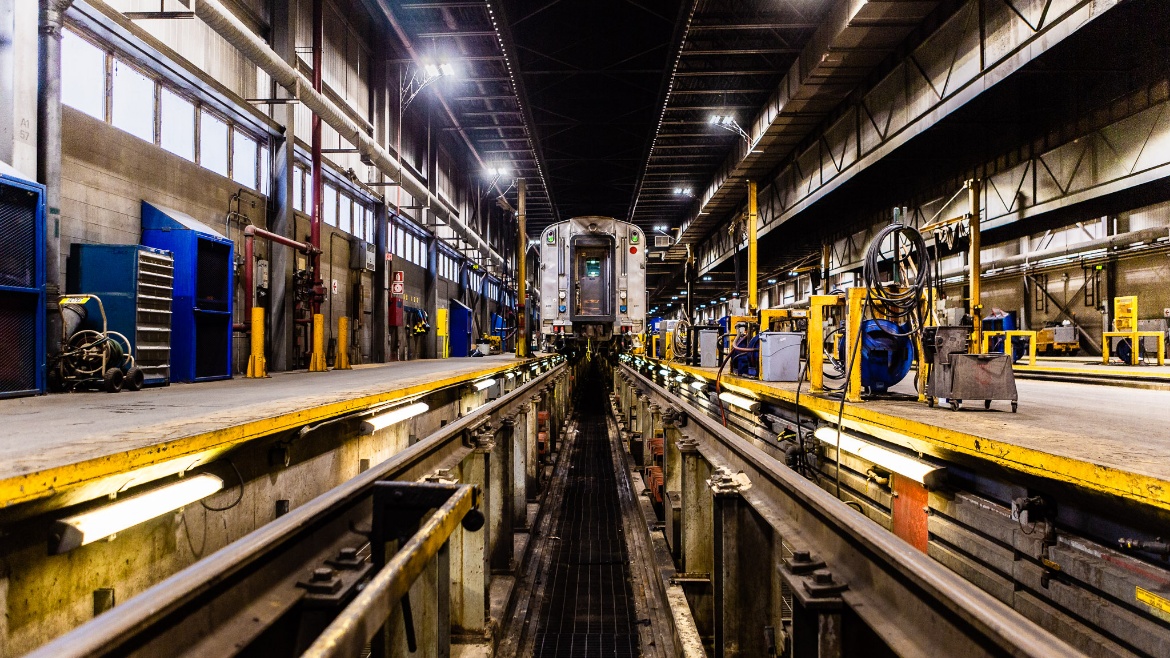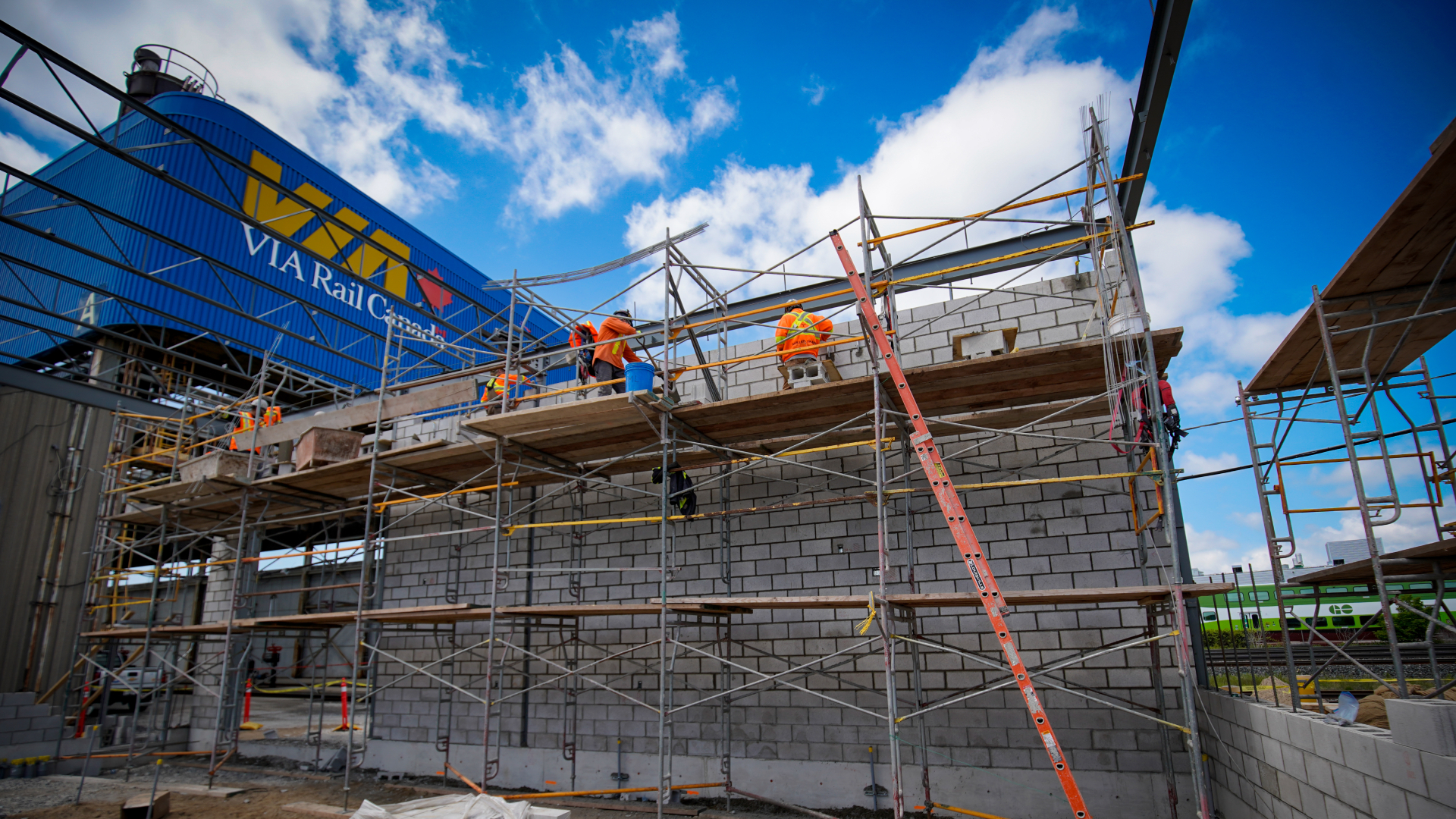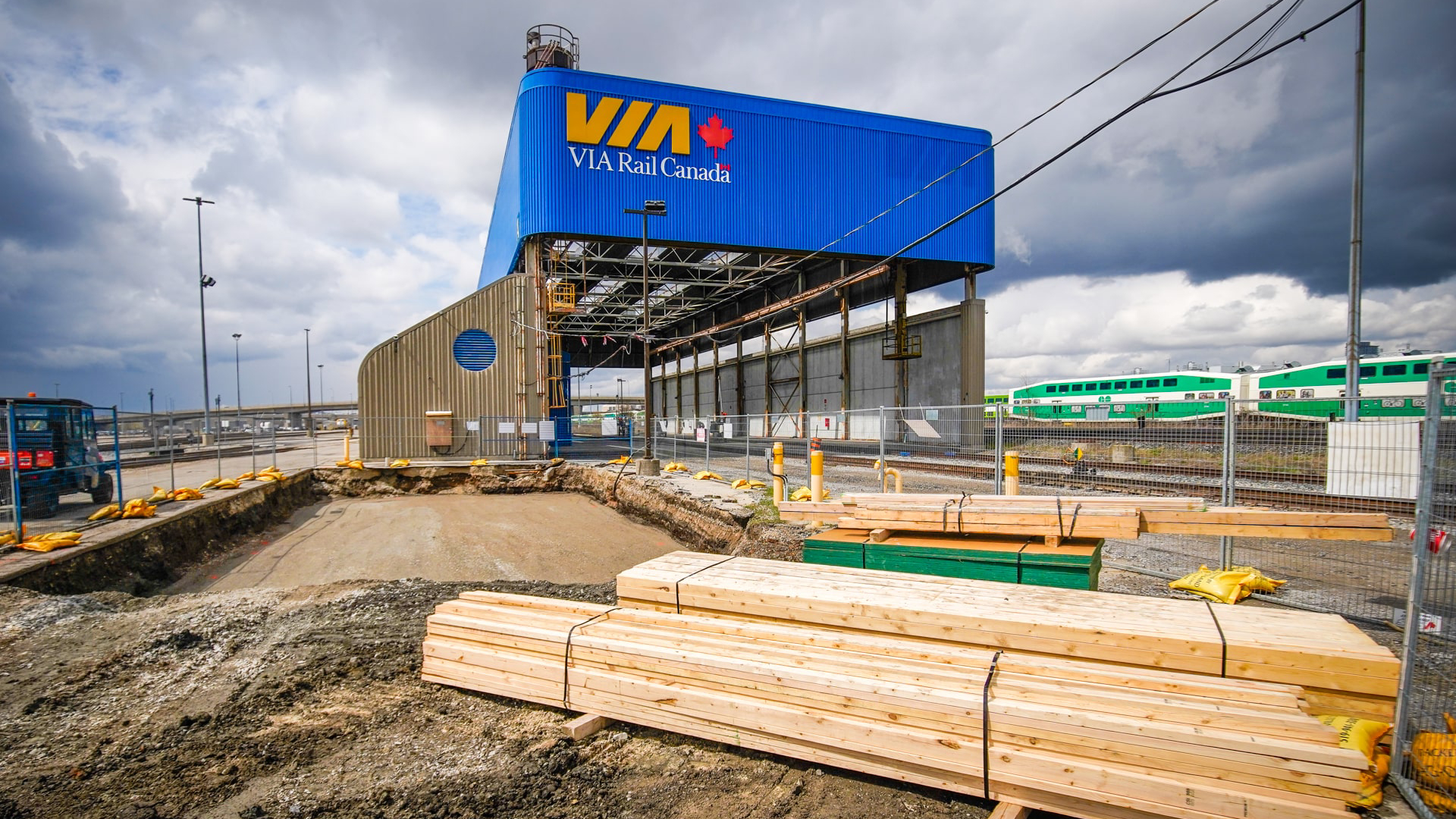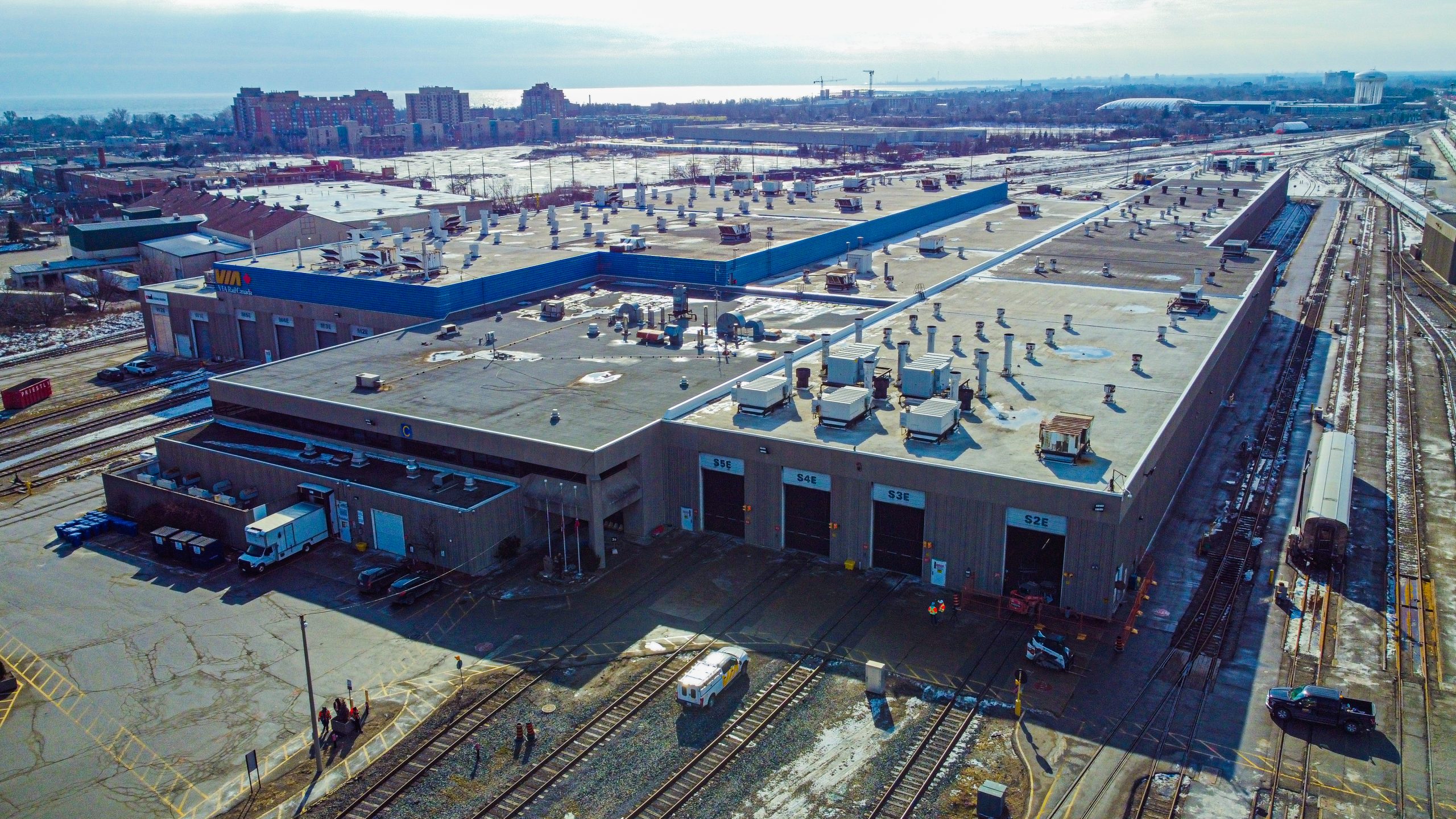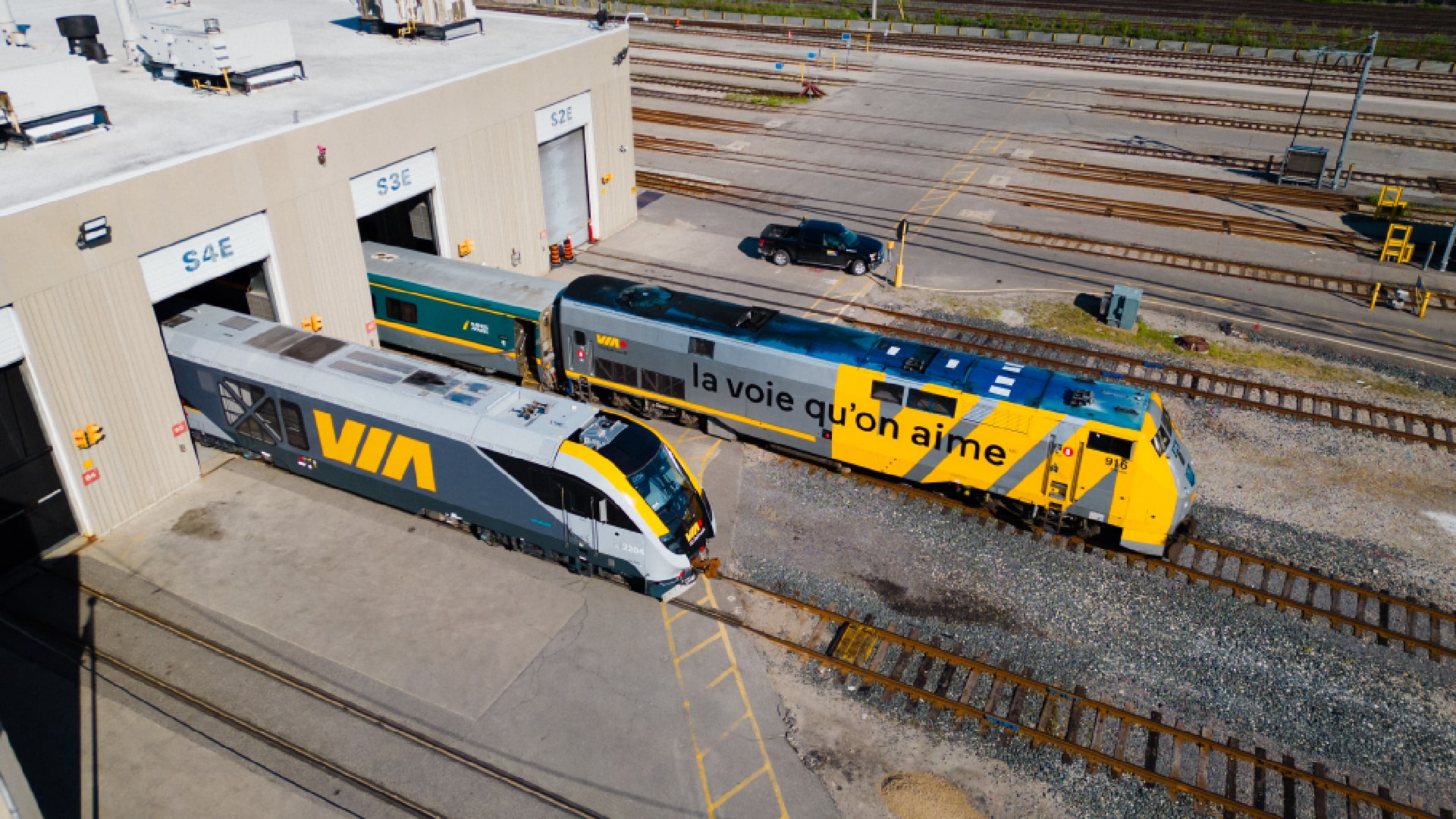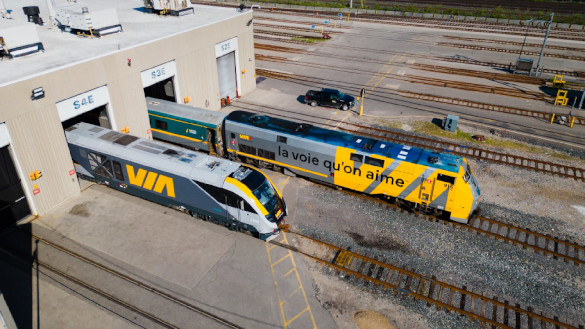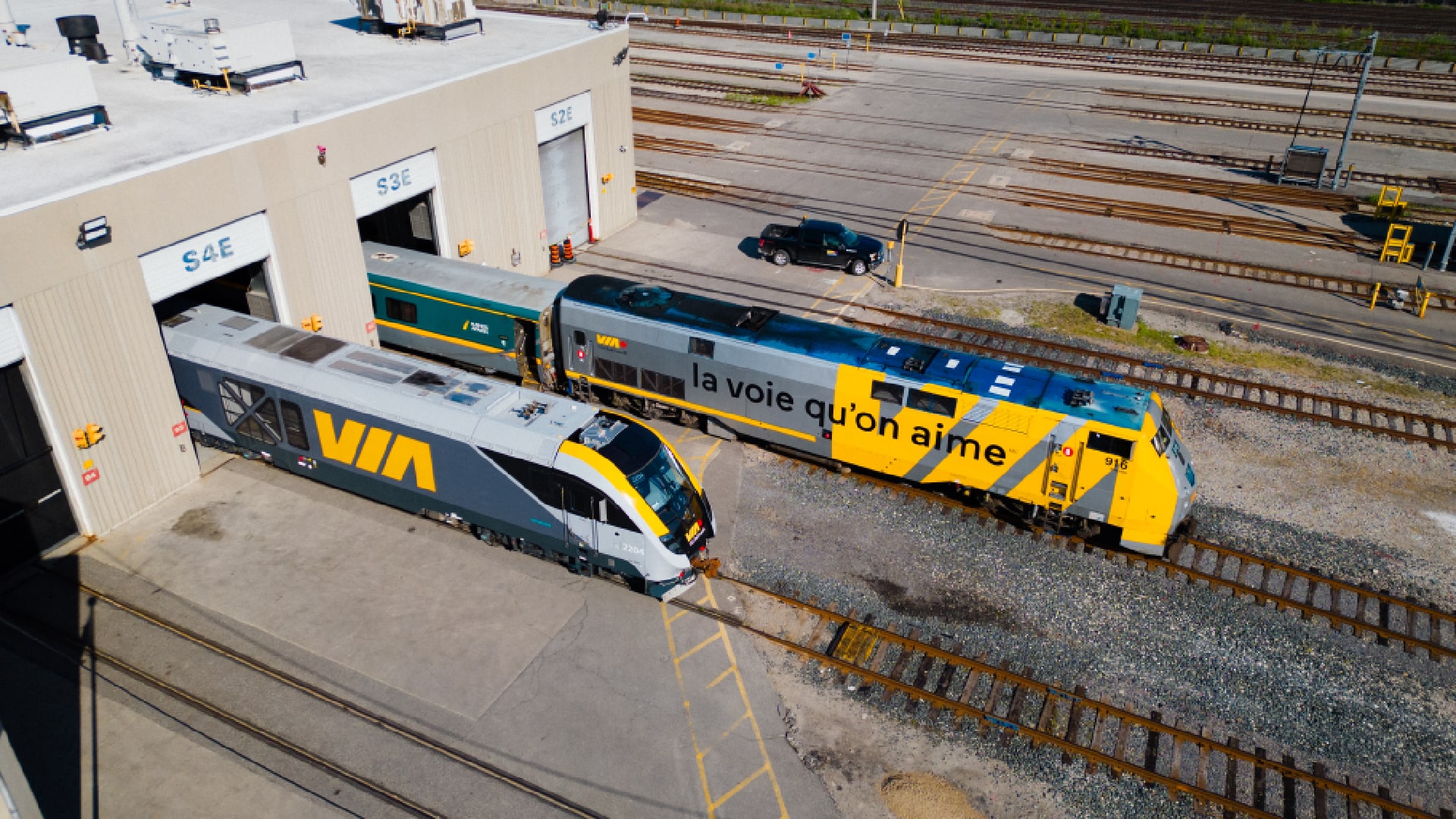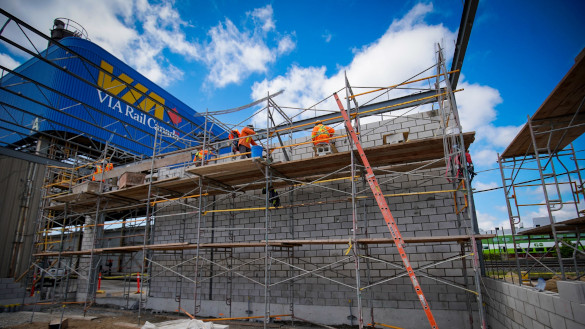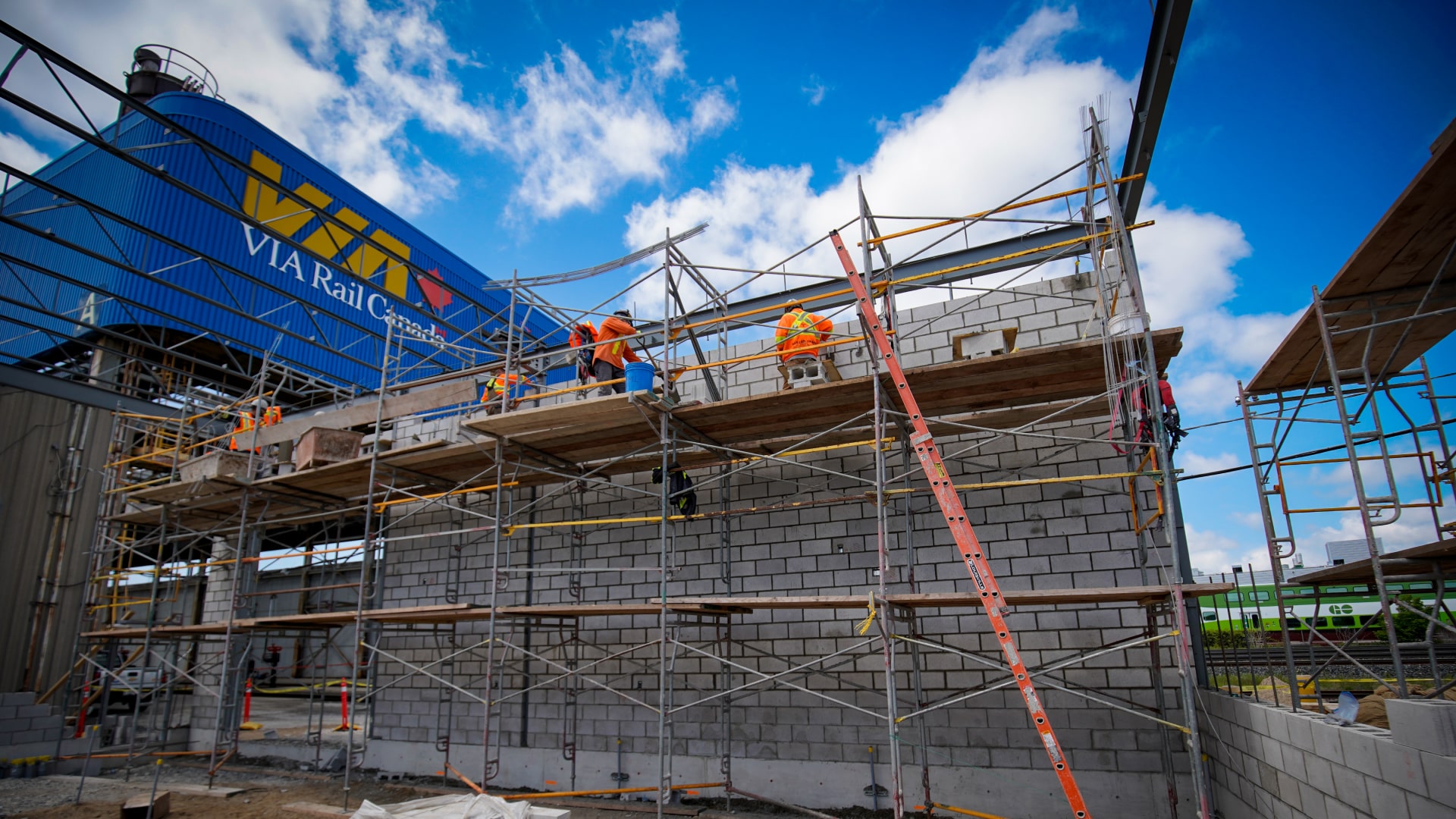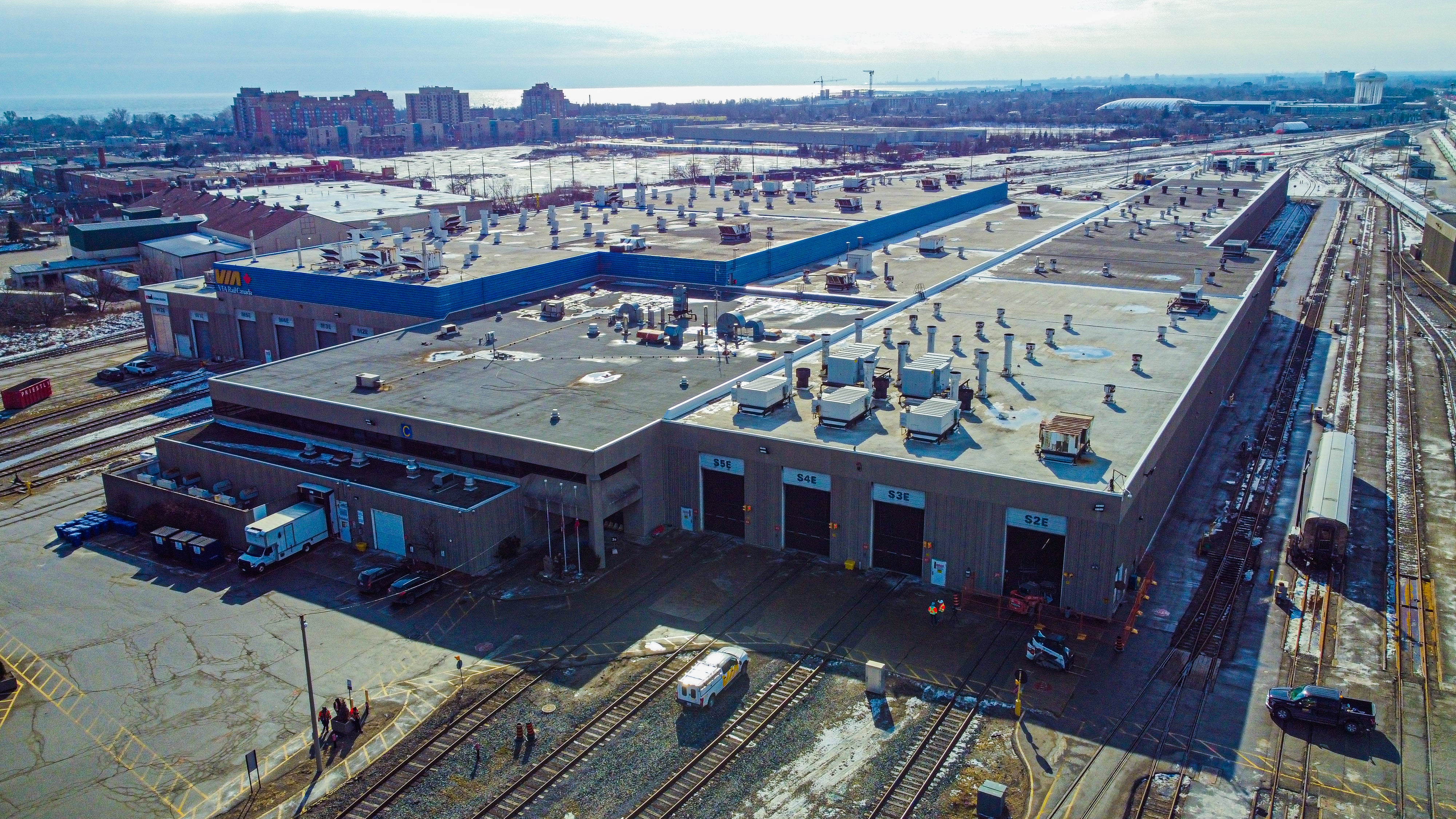Toronto Maintenance Centre Modernization

In your community
Stay informed of the work in progress or to come for the Toronto construction site.Mitigation measures
The quality of life of our neighbours and residents of in the Etobicoke-Lakeshore borough is important to VIA Rail and the construction team. As a result, several mitigation measures have been implemented to limit the disruptions caused by the upcoming work.
- HGC Engineering has been retained as the Noise and Vibration experts and professional monitors have been installed to monitor noise and vibrations throughout the site.
- These monitors can upload data to an internet-based site and provide e-mail alerts to VIA Rail and Buttcon Limited should noise and vibration impacts exceeding the performance limits be recorded.
- An Air Quality and Dust Control Management Plan that includes a review of the planned construction work, methods of demolition, dust control procedures and air monitoring requirements at the property lines of the construction site.
- Ten enLink Outdoor Air Quality (OAQ) particulate sensors will be deployed as part of the Air Quality Monitoring Program.
- The system will provide detailed self-reporting features that allow the Project Team to have 24/7 access to review air quality data and set alerts for exceedances.
- To mininize traffic disruption in the community, site access of the contractor and their subcontractors has been carefully planned. The contractor has a safety-first approach that will minimize construction impacts and ensure the success of the mitigation measures and the safety within the rail yard.
Citizens wishing to make a complaint about noise, dust or vibration nuisance can do so directly our website.
View all Mitigation measures
News and articles
Photos and Videos
QoO1txj6Hcc
AIzaSyD2ERIbGtqPRggk-1OZx9MECRdJFXI_Yd4
4
9
February 2023 Spotlight
2FJtwnJtUC4
AIzaSyD2ERIbGtqPRggk-1OZx9MECRdJFXI_Yd4
6
9
March 2023 Spotlight
C370JWxgeMk
AIzaSyD2ERIbGtqPRggk-1OZx9MECRdJFXI_Yd4
7
9
April 2023 Spotlight
0aMet63HOWA
AIzaSyD2ERIbGtqPRggk-1OZx9MECRdJFXI_Yd4
8
9
May 2023 Spotlight
Jq99_CA3L4o
AIzaSyD2ERIbGtqPRggk-1OZx9MECRdJFXI_Yd4
9
9
June 2023 Spotlight
Nouvelles et articles
Frequently asked questions
The Maintenance Facilities upgrade program is part of the Fleet replacement program. The Federal government allocated funding for the Fleet replacement program in it’s 2018 budget.
The maintenance facilities upgrades are part of a larger five pillars program aiming to improve VIA Rail’s service in the Corridor.
- The first pillar is the purchase of 32 bi-directional trains for the Corridor fleet.
- The second pillar consist of modernizing maintenance processes for consist-based maintenance and adapting our maintenance centers to allow them to maintain the new trains.
- For the third pillar, we will integrate the systems and equipment and build the interface between the 32 trainsets, allowing various VIA Rail departments to coordinate, monitor, report, communicate and support VIA Rail services.
- The fourth pillaris the project management phase and exists to ensure the other phases of the project are delivered.
- The fifth and final pillar of the program is Maintenance facilities upgrades: The Toronto Maintenance Facility and Montreal Maintenance Facility will be upgraded with new infrastructure and facilities to enable efficient maintenance and servicing of the new fleet.
The project to modernize the maintenance centres in Montréal and Toronto is part of the Corridor fleet replacement program, for which funds were allocated in the Federal government’s 2018 budget. Part of the $1.5B overall budget for the New fleet is being invested in the modernisation of VIA Rail’s maintenance centres, the implementation and integration of various IT systems as well as the transformation of maintenance processes.
The Toronto Maintenance Centre (TMC) project includes the demolition of a portion of the existing structure of Building C, construction of a new addition, removal, and replacement of tracks, as well as the addition of a stand-alone Wheel Lathe Facility, and critical infrastructure improvements throughout the maintenance yard.
The TMC project scope highlights include:
The Toronto Maintenance Centre (TMC) project includes the demolition of a portion of the existing structure of Building C, construction of a new addition, removal, and replacement of tracks, as well as the addition of a stand-alone Wheel Lathe Facility, and critical infrastructure improvements throughout the maintenance yard.
The TMC project scope highlights include:
- Partial demolition of the existing main building;
- Modification to the existing main building;
- New maintenance building addition;
- New Wheel Lathe building (to maintain wheels and ensure smooth operation on the tracks);
- Infrastructure and Trackside Service Building (TSB) for Vehicle Equipment Measurement Systems (VEMS);
- Fuelling upgrades;
- Stabling upgrades;
- State of Good Repair Work (SOGR).
VIA Rail implemented a detailed transition strategy (adapting the existing facilities) to ensure the new fleet can be maintained safely and effectively through the progress of the construction.
Reduced environmental impact for our communities has always been a core priority for the Corridor Fleet Replacement Program.
The city of Toronto, the general population and the stakeholders for the Toronto site have been informed. We have set up communications channels to keep the public regularly updated throughout the process.
To further reduce the impact on the Toronto community, dust, air, noise, and vibration monitoring systems will be set up around the site’s perimeter. These systems will follow provincial guidelines.
Any complaints received regarding nuisance effects (air, noise, vibration) will be investigated promptly and the cause of the complaint will be controlled to ensure no further impacts occur.
The city of Toronto, the general population and the stakeholders for the Toronto site have been informed. We have set up communications channels to keep the public regularly updated throughout the process.
To further reduce the impact on the Toronto community, dust, air, noise, and vibration monitoring systems will be set up around the site’s perimeter. These systems will follow provincial guidelines.
Any complaints received regarding nuisance effects (air, noise, vibration) will be investigated promptly and the cause of the complaint will be controlled to ensure no further impacts occur.
VIA has completed a geotechnical survey including soil analysis to determine the extent of contaminated soil, hazardous waste, and presence of biogas. The contractor will monitor any spills, as well as all of the shipping of any excavated soils to ensure they are properly handled and disposed at registered receiving sites.
The vision for VIA’s modernization plan has always included both Toronto and Montréal’s maintenance centres and its employees as key players in keeping our new fleet running reliably for Canadians.
During construction, both centres will be active in performing maintenance on our trains. As the new fleet arrives in stages, we will be training our staff to adapt to the new trains, using state-of-the-art simulation technology to ensure the longevity of our new fleet.
During construction, both centres will be active in performing maintenance on our trains. As the new fleet arrives in stages, we will be training our staff to adapt to the new trains, using state-of-the-art simulation technology to ensure the longevity of our new fleet.
In this next step of becoming a more modern passenger rail service, VIA is proud to be contributing to Canada’s sustainable recovery. This project in Toronto will create up to 475 local construction and trade jobs from now to 2026.
Before the pandemic, VIA moved millions of passengers from coast to coast to coast and got millions of cars off our roads, which is significant in reducing greenhouse gases.
As well as the positive impact our trains creates for the environment, our new maintenance facilities will both be LEED certified, signifying the facilities’ benchmark for green design and sustainability.
Finally, in 2019, VIA Rail received a grant from Environment Canada to remove the containers at the TMC site. VIA Rail is actively working to clean up both sites and has registered the TMC and MMC with the Environment Canada (ECCC) Federal Contaminated Sites Action Plan (FCSAP) to work towards removing contamination that is found during excavation activities to remediate the sites.
The soil contamination is a result of decades of use as a train yard and the accumulation of contamination from related industrial activities, as well as contamination that was previously present on the sites prior to VIA Rail’s occupation.
As well as the positive impact our trains creates for the environment, our new maintenance facilities will both be LEED certified, signifying the facilities’ benchmark for green design and sustainability.
Finally, in 2019, VIA Rail received a grant from Environment Canada to remove the containers at the TMC site. VIA Rail is actively working to clean up both sites and has registered the TMC and MMC with the Environment Canada (ECCC) Federal Contaminated Sites Action Plan (FCSAP) to work towards removing contamination that is found during excavation activities to remediate the sites.
The soil contamination is a result of decades of use as a train yard and the accumulation of contamination from related industrial activities, as well as contamination that was previously present on the sites prior to VIA Rail’s occupation.
VIA Rail conducted a fair, open and transparent procurement process. A market-sounding exercise was conducted in December 2019 with general contractors interested in the project. A request for qualifications (RFQ) was issued in January 2020, and a request for proposals (RFP) was conducted and released to a shortlist of qualified proponents. Selecting our partners was based on relevant experience, technical compliance, delivery capacity, and price.
We followed the most rigorous governance practices and had a Fairness Monitor oversee the process to ensure it was open and transparent.
We followed the most rigorous governance practices and had a Fairness Monitor oversee the process to ensure it was open and transparent.
Do you have a question, a suggestion, or a complaint?
You can fill the complaint form, anonymously or not.
